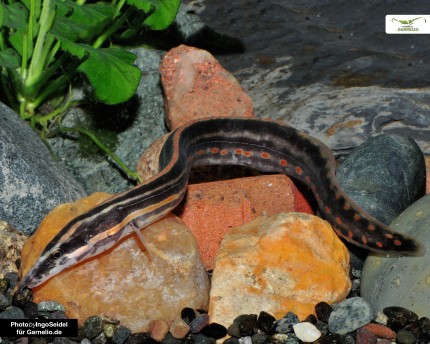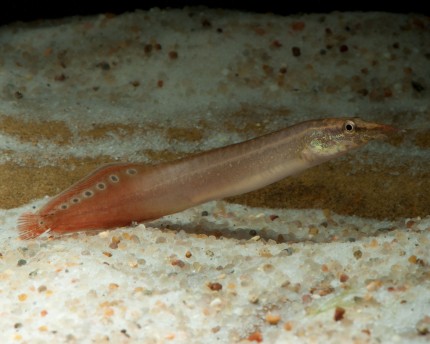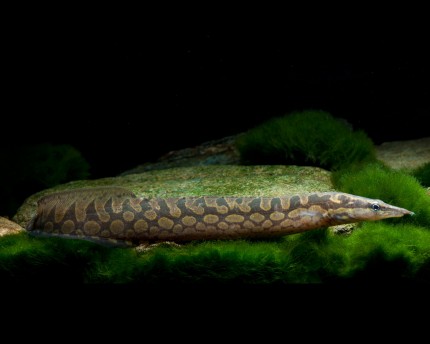Spiny eels in nature
Bottom-dwelling spiny eels are found in all kinds of waters, including Lake Tanganyika, Lake Malawi and other East African lakes, as well as rivers and standing waters from Africa to Southeast Asia. Spiny eels prefer weedy waters or sections rich in hiding places with many stones. In the wild, the nocturnal fish live predatorily on small fish, worms and small crustaceans and insect larvae. Some species burrow, mostly those with round bodies. The laterally flattened, ribbon-like species, on the other hand, hide in the dense aquatic plant groups.
Spiny eels in the aquarium
In the aquarium, spiny eels need space and good hiding places above all. They prefer an aquarium densely covered with plants up to the water surface, areas shaded by floating leaves, floating plants or similar and - depending on their way of life - much or little current. The burrowing species are happy about a thick sand layer at the bottom of the aquarium. Depending on their origin, the spiny eel species need hard, medium-hard or even soft water.
With a body length of one meter, one of the most beautifully marked is also one of the largest known spiny eels kept in aquaristics, the fire spiny eel or red-striped spiny eel (Mastacembelus erythrotaenia). It is native to Southeast Asia, where it is found from Thailand to Cambodia and Indonesia in rivers with little current and in overgrown floodplains. The fire spiny eel must be kept in an aquarium with an edge length of 150 cm or more, because it can grow very large. With increasing size, a 250 cm aquarium will eventually be due. This aquarium must be covered very well, the slender spiny eels come also by very small gaps and go according to her nature very gladly on wandering!
Reproduction in the aquarium
Some spiny eel species have already been bred in the hobby. Spiny eels lay their sticky eggs on a spawning substrate, the fire eel takes for example mosses or other plants. Other species prefer gravel or other hard substrates. In the case of the fire eel, very soft water stimulates spawning activity. The larvae hatch after about a week and then need fine live food. A separate rearing tank should be preferred, especially if the spiny eels are kept in fish company.
Socialization of spiny eels
Spiny eels are suitable for socialization to a limited extent, rather with larger fish that cannot fall prey to them. If peaceful cichlids or also larger tetras fit to them from the water values, they are a good company. Catfish prefer the same regions in the aquarium and should therefore only be joined to the spiny eels in sufficiently large tanks. Shrimp and small crayfish will be eaten, but large crayfish or water crabs can severely injure the eels and should not be added to such an aquarium.
Feeding spiny eels
Spiny eels are predators and should be provided with live food of suitable size in the aquarium: Worms such as Tubifex or shiner worms, sinking insect larvae, feeder shrimp, and so on accommodate their natural hunting instincts. Gradually, spiny eels in the aquarium can also be accustomed to frozen food, which should be mixed with some live food at the beginning to make the acclimation easier. Various frozen mosquito larvae, red, white and black are well suited here. Feeding is best early in the morning or late in the evening, so that the nocturnal aquarium fish really get something from the food.
Conclusion
In a suitable aquarium, a spiny eel is a wonderful aquarium fish whose exotic appearance makes it distinctly different from the usual ornamental fish and great to watch. Its special feeding habits make it a bit more difficult to keep, but you can take them into account very well and then simply provide the animals with live food accordingly. Since, for example, the fire eel can also grow up to 60 cm long in the aquarium, it is a suitable stock for a very large tank.



